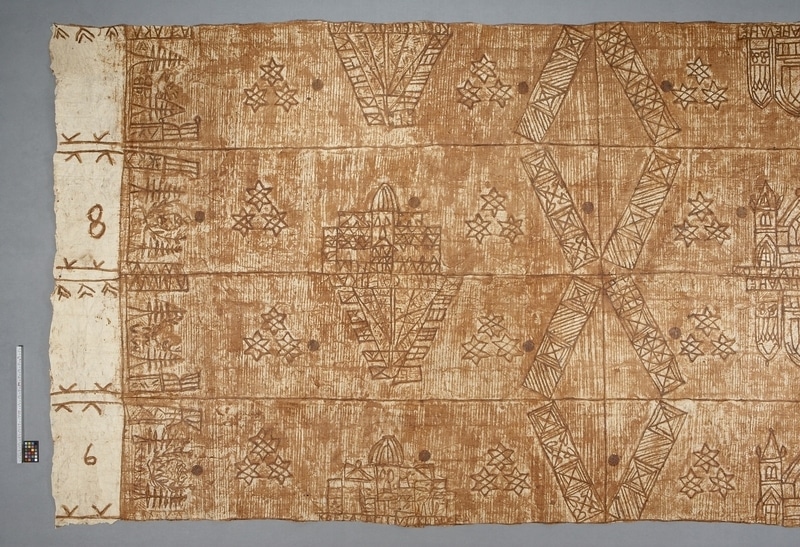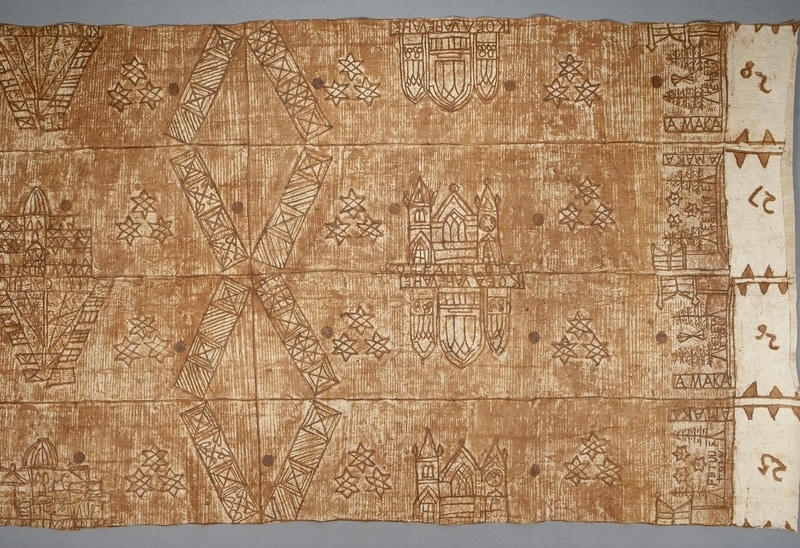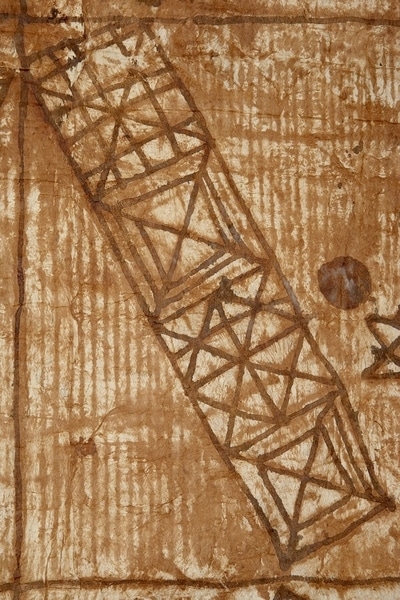Tapa Cloth Item Number: 681/1 from the MOA: University of British Columbia



Description
Large rectangular tapa cloth with handpainted designs in light and dark brown on natural coloured ground. In the centre are ‘X’ motifs, flanked on each side by church-like buildings and surrounded by stars and dots. Towards the ends are forest scenes. Each end has four squares, some containing numbers to show where cuts are made during special ceremonies.
History Of Use
Barkcloth, commonly known as tapa, is one of the most distinctive products of the diverse cultures of the Pacific Islands. The name is derived from the Samoan word tapa, which means the undecorated edge of a piece of barkcloth, and the Hawaiian word kapa, a variety of barkcloth. Tapa was probably brought to the Pacific Islands thousands of years ago by the ancestors. No important occasion is complete without the presence of tapa, and those who make it continue to generate techniques and designs that serve both utilitarian and ceremonial purposes.
Iconographic Meaning
Design represents the relationship between church and state in Tonga. Tonga has a state church - Wesleyan Methodist.
Narrative
The tapa was given to the Millars in the centennial year in Tonga. Made for them by the wife of a government driver. Nuku'alofa is a seaport and the site of the royal palace (built in 1867).
Item History
- Made by Alice Fale (Maker) in Nuku'alofa, Tongatapu, Tonga during 1976
- Collected during 1976
- Owned by Mrs. Perry Millar
- Owned by Perry Millar before November 28, 1980
- Received from Perry Millar (Donor) on November 28, 1980
What
- Name
- Tapa Cloth
- Identification Number
- 681/1
- Type of Item
- tapa cloth
- Material
- paper mulberry bark, paint and pigment
- Overall
- height 420.0 cm, width 200.0 cm
Who
- Culture
- Tongan
- Creator
- Alice Fale (Maker)
- Previous Owner
- Mrs. Perry Millar and Perry Millar
- Received from
- Perry Millar (Donor)
Where
- Holding Institution
- MOA: University of British Columbia
- Made in
- Nuku'alofa, Tongatapu, Tonga
When
- Creation Date
- during 1976
- Collection Date
- during 1976
- Ownership Date
- before November 28, 1980
- Acquisition Date
- on November 28, 1980
Other
- Item Classes
- textiles
- Condition
- good
- Accession Number
- 0681/0001